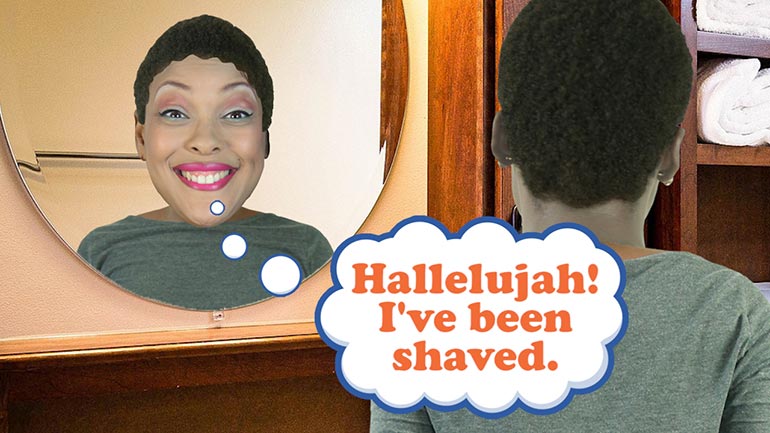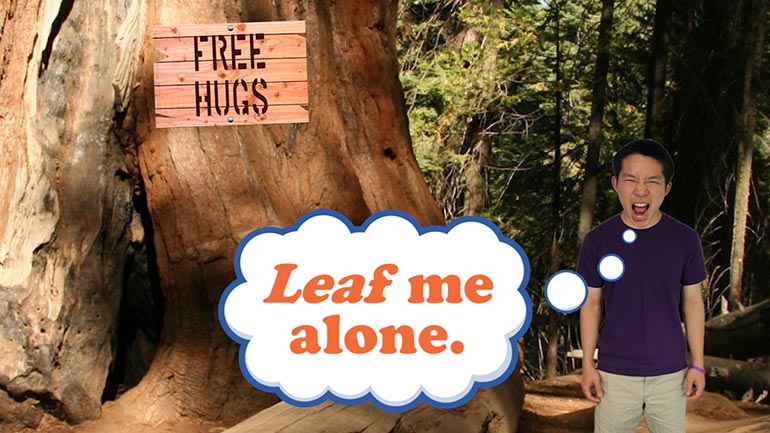ShmoopTube
Where Monty Python meets your 10th grade teacher.
Search Thousands of Shmoop Videos
ELA 4: Characterization 1050 Views
Share It!
Description:
Characterization is important, because how boring would it be if every character spoke and acted exactly the same way? It certainly would have made the plot of Pygmalion more confusing.
Transcript
- 00:03
[Dino and Coop singing]
- 00:13
Think of all the different people in your life that you care about: your mom, your dad, [Student thinking about her mom and dad]
- 00:17
your friends, yes, even your siblings…
- 00:19
Think of what you like about each of them. [Mum bringing a present]
- 00:21
Maybe you like how caring your mom is, or how good at making fart noises your dad is, [Dad laughing]
Full Transcript
- 00:26
or how well your best friend reacts when you surprise dutch oven them… [Friend in bed looks shocked]
- 00:29
The point is that you like them for who they are, and since they're all different and unique
- 00:33
people, you like them for different and unique reasons.
- 00:36
If your life was a book, then all of these different people would be the different characters, [Book opens]
- 00:40
and they'd all have their own likes, interests, motivations, and personality traits. [Page about her brother]
- 00:44
And if you want to write an interesting story, you need unique characters with their own [The pages turn and other characters such as mom, dad appear]
- 00:48
personalities, just like in real life.
- 00:51
We call this "characterization," and it consists of five main points: the way the character [Coop pointing at a blackboard]
- 00:56
speaks, the way they think, how they act, how they react to their surroundings, and
- 01:01
how others react to them.
- 01:03
If that seems hard to remember, don’t worry. [Dino pointing at a blackboard]
- 01:05
That's why we have TEARS.
- 01:07
No, we don’t mean that we're crying over characterization. [Girl crying at a TV]
- 01:09
TEARS is just a device you can use to remember the five main points.
- 01:13
Which brings us to our favorite time....snack time! [Stop sign appears over snacks]
- 01:17
…Oh.
- 01:18
Example time?
- 01:19
…We guess that's fun too…
- 01:20
Okay, so let’s think about our good pal, Cinderella. [Girl cleaning a window]
- 01:22
What are some of her character traits?
- 01:24
To us, she comes across as being shy, quiet, well-mannered and hard-working.
- 01:28
She also doesn't have very much money for clothing, but despite that, she's very pretty. [Cinderella smiles]
- 01:33
She's so pretty, that people are actually jealous of her.
- 01:36
We know exactly what that’s like.
- 01:38
We've won every beauty pageant we've ever been to. [Girl with a tiara and pageant sash on]
- 01:40
To be fair, our competition was pretty…ruff. [Dogs on the stage]
- 01:42
Anyway, the reason we can describe Cinderella like this is because of the characterization
- 01:47
in the story, i.e., because of how she speaks, acts, thinks, reacts, and is reacted to. [Cinderella going to the Prince's ball]
- 01:52
(Coughs) TEARS.
- 01:53
Now that we've learned how to use the five aspects of characterization to figure out
- 01:58
what a character is like, we can compare that character to another one using a Venn diagram. [A Venn diagram in the book of characters]
- 02:03
Since we're comparing two characters, let's put Cinderella in one circle, and the little [Mermaid in the sea]
- 02:07
mermaid in the other.
- 02:08
The Venn diagram lets us compare each character by putting their different character traits [Coop pointing at a blackboard]
- 02:12
in each of their own circles.
- 02:13
And here's the fun part.
- 02:15
See the middle section where the two circles overlap? [The middle section is highlighted]
- 02:18
That's where we can put character traits that both characters have.
- 02:21
Ta-da!
- 02:22
Venn diagram magic.
- 02:23
Earlier, we said that Cinderella is pretty.
- 02:25
So we could put that in Cinderella's circle. [Arrow pointing to her circle]
- 02:28
But not so fast!
- 02:29
Ariel is pretty, too.
- 02:30
So it goes in the center. [Arrow pointing to the center]
- 02:32
Easy peasy.
- 02:33
We also said that Cinderella is shy.
- 02:34
Is Ariel shy too?
- 02:36
Not really. [No sign appears over Ariel]
- 02:37
So "shy" just belongs in Cinderella's circle.
- 02:39
And now, let's try to think of a character trait Ariel has…we know that she wants legs more
- 02:43
than anything else, and since Cinderella already has legs, we can put this one just inside
- 02:48
Ariel’s circle.
- 02:49
Great.
- 02:50
Now we have one character trait that belongs to Cinderella, one that belongs to Ariel, [Arrows point to the different traits]
- 02:54
and one that they share.
- 02:55
Now that you know how Venn diagrams work, why not try making your own?
- 02:59
Pick two characters and see which traits they share, and which traits are theirs and theirs [Student writing in a Venn diagram of her mom and dad]
- 03:03
alone.
- 03:04
And remember to use TEARS to help you out!
- 03:06
…No…not…crying…though who knows?
- 03:08
Maybe that could work too... [Other student crying]
Up Next
Sticks and stones, right? Well...only sometimes. It's a good idea to make sure your words aren't going to hurt others. Let's look at some ways to d...
Related Videos
Learn to debate like a champ. It's way better than debating like a chimp. That just takes mudslinging to a whole new level.
Today we'll learn about biographies and autobiographies. And no, the second one has nothing to do with the lives of cars.
In this lesson we'll subject you to some verbs and predicates. Each one is a necessary part of a complete breakfas—er...sentence.
Choosing words carefully is important. You may end up vexing the assemblage of citizens you're conversing with...or you might even just plain bore...




